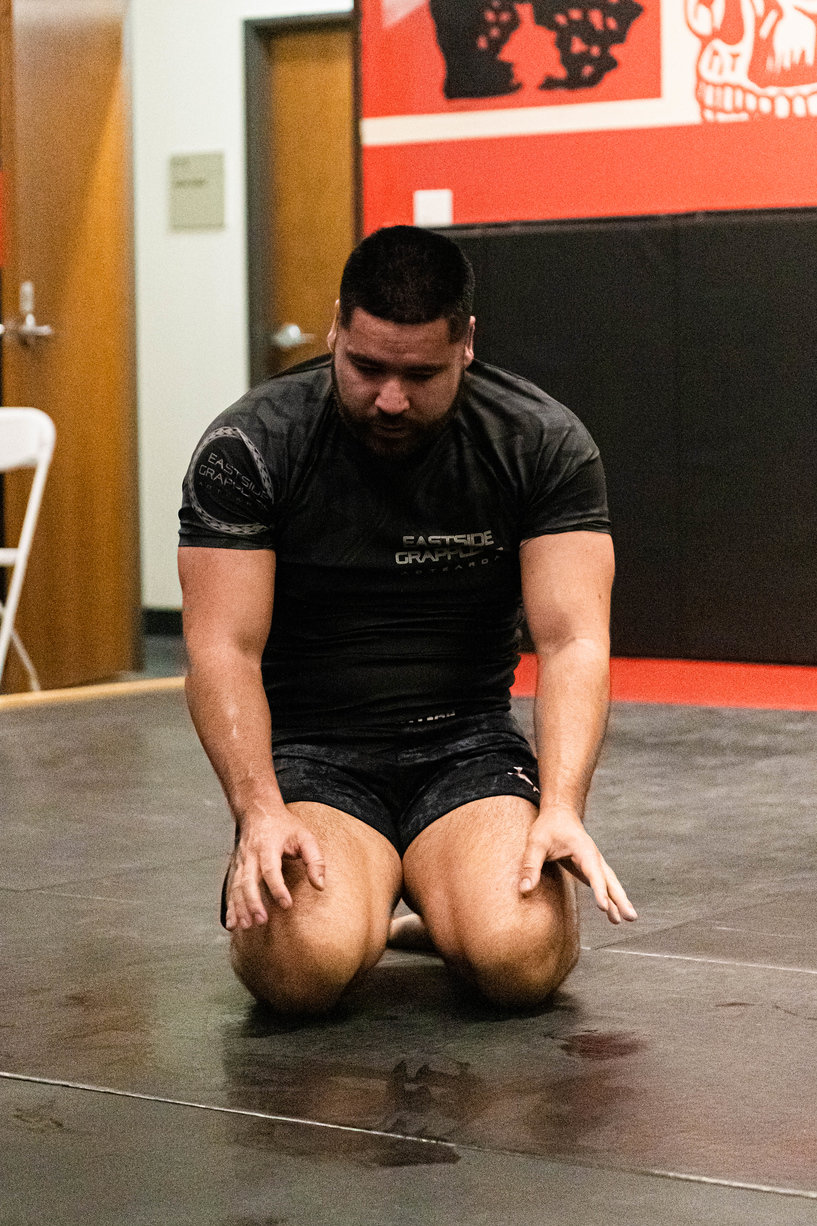Road running has a deep-rooted tradition when conditioning for Muay Thai especially in Thailand. Outside of their grueling pad or sparring sessions, it’s onto the road for long hill runs or sprints. This certainly works in Thailand with the vast talent they have.
But those in other parts of the world may want to take a more targeted approach to their conditioning especially if you’re not training full time.
Muay Thai requires large contributions from aerobic and anaerobic lactic processes with bouts being fought at heart rates above the anaerobic threshold. The effort-pause ratio is 2:3 where 9 seconds of high-intensity activity are interspersed with 12 seconds of break.
Unfortunately, the research investigating the conditioning requirements for Muay Thai is scarce. While there are a few studies looking at the demands of a Muay Thai fight, others have had to draw from similar combat sports to make inferences and conclusions.
However, we will focus on the research currently available.

FREE Strength & Conditioning Program To Never Gas Out In The Ring
Physiological Profile Of A Muay Thai Fighter
The first study to investigate the physiology of Muay Thai took ten Thai boxers who were regular competitors with 6 competing internationally and 4 competing nationally [1].
These Thai boxers had an average VO2max of 48.5 ml.kg–1min–1 which would be considered quite low compared to other striking combat sports such as amateur boxers and karateka.
However, this may have been due to mixing international and national level Thai boxers but the differences between the levels were not reported.
A later study took twenty Muay Thai fighters where 12 were competing internationally and 8 were competing nationally [2]. These Thai boxers had an average VO2max of 54 ml.kg–1min–1 showing a more well-developed aerobic energy system compared to the previous study.
Unfortunately, that is the extent of the research on the physiological profiles of Muay Thai fighters. Luckily, we can derive more information from the physiological demands of a Muay Thai bout.
Physiological Demands Of A Muay Thai Fight
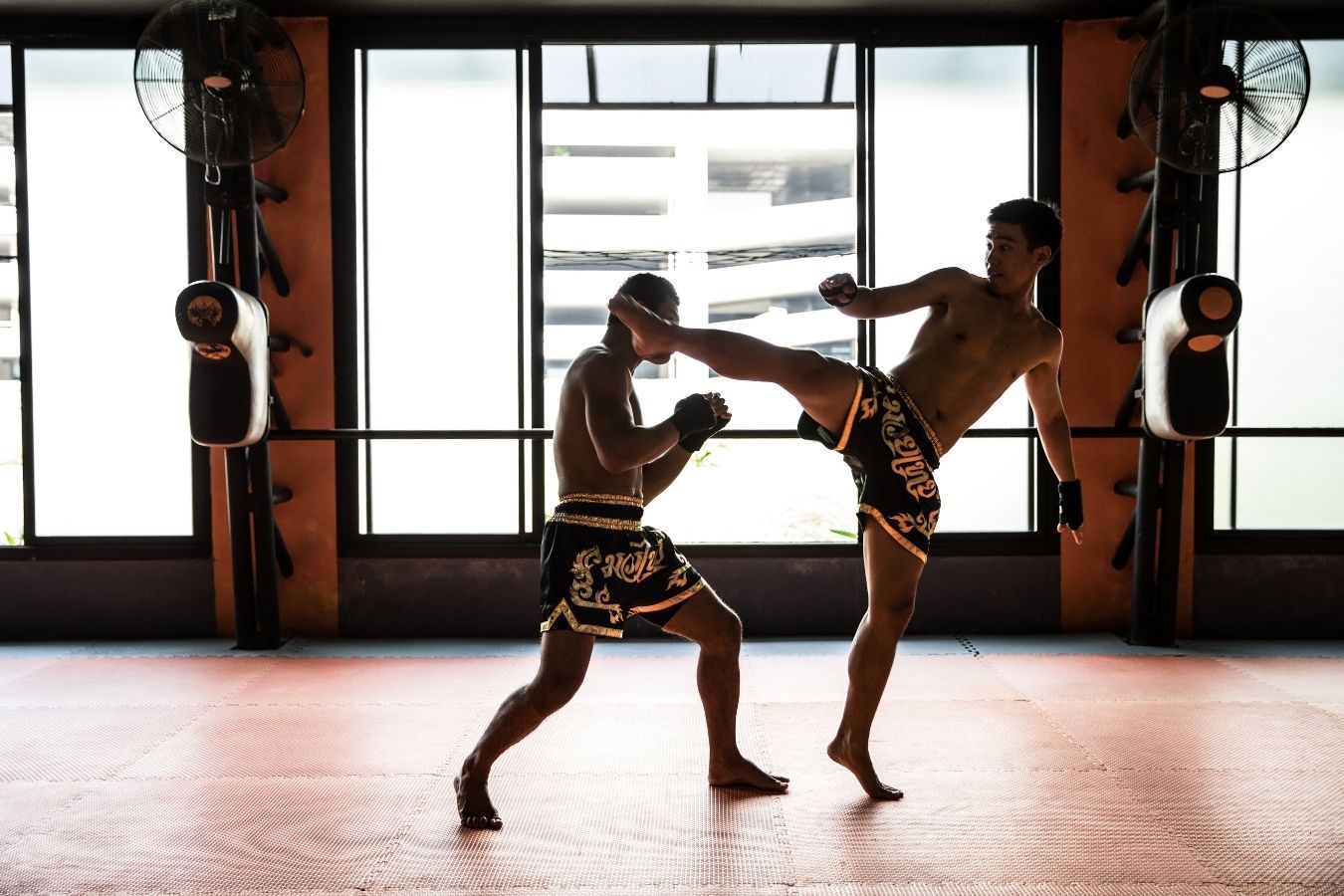
The first study looked at the demands of a simulated Muay Thai fight [1]. They used the same 3 x 3-minute rounds with a 1-minute break but the rounds were performed on the pads. Each round consisted of 6 attacks and 6 defensive actions with each lasting 15 seconds. These were planned combinations.
They did this so they could have the Muay Thai athlete wear a gas analyzer to accurately measure aerobic contributions during the rounds.
They found VO2 and heart rate were above the anaerobic threshold throughout the whole simulation. The 1 minute recovery period was not enough to recover between rounds. Indicating a large contribution from the anaerobic lactic energy system.
As the rounds progressed, VO2 also increased showing the greater demand on the aerobic processes as the fight progressed.
It’s important to note that in this study, anaerobic threshold occurred at very, very low heart rates averaging 137.5 BPM which would be considered low-level aerobic exercise. This coincides with the lower VO2max seen in these fighters.
This may suggest that the level of conditioning of these Muay Thai fighters was not at a very high level.
The second study on the other hand took blood lactate and heart rate measurements during a real Muay Thai competition [2]. As previously mentioned, these Thai boxers had a better developed aerobic energy system.
They found blood lactate concentration increased with each round but the change in blood lactate between each round decreased as the fight progressed. Indicating that the aerobic processes become more prevalent as the fight progresses.
Like the previous study, heart rate was steadily maintained above the lactate threshold throughout each round. However, heart rate at lactate threshold in these Thai boxers average 168 BPM. Around 30 beats higher than the previous study!
We can conclude that Muay Thai requires high levels of anaerobic and aerobic contributions.
Activity Profile Of A Muay Thai Fight
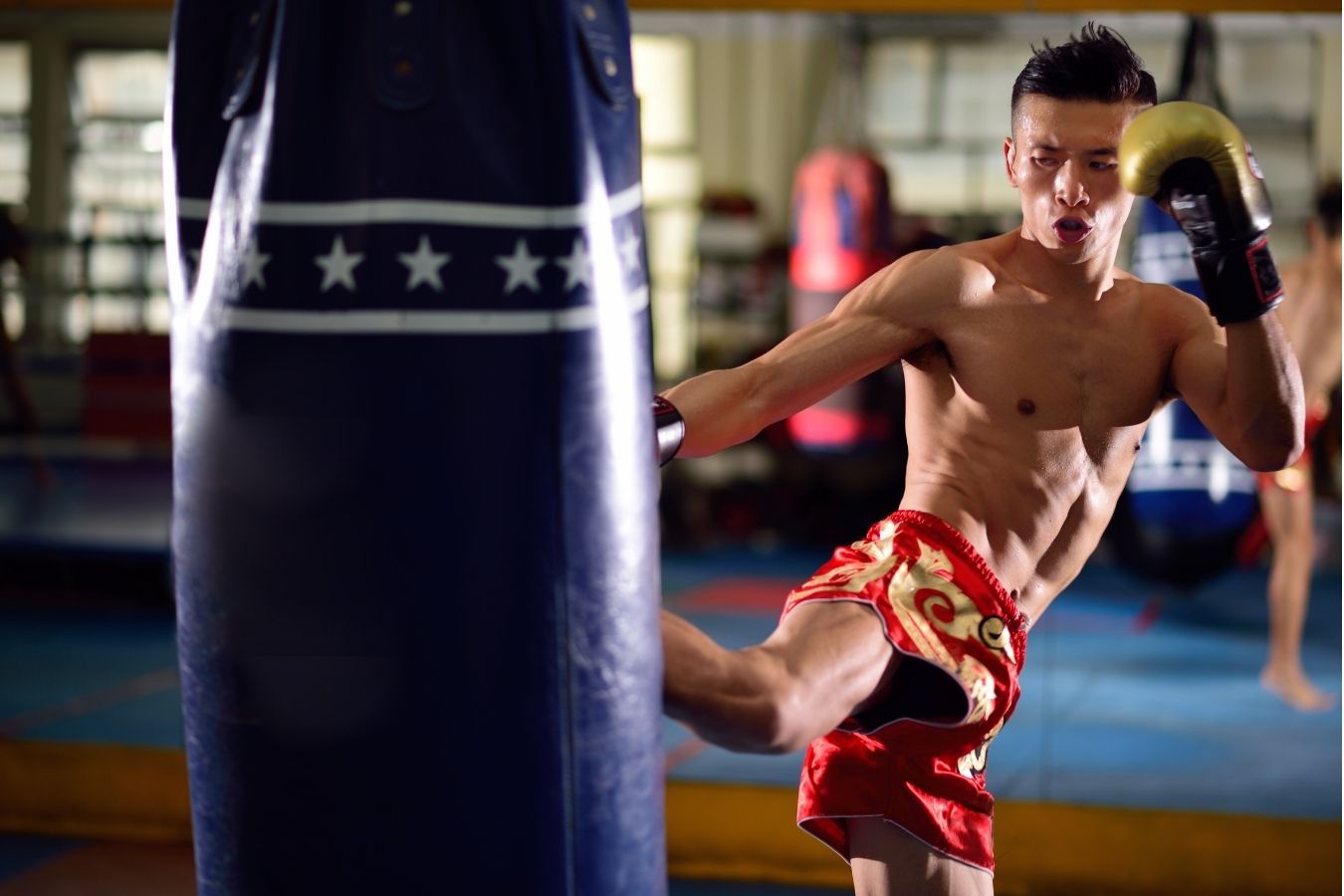
Only two studies have investigated the activity profile of a Muay Thai fight. The first looked at amateur Muay Thai and categorized each phase of activity as [3]:
They found Muay Thai had an effort-pause ratio of 2:3 where 9 seconds of interaction were interspersed with 12 seconds of observation and preparation.
The second study categorized the phases of activity and inactivity differently:
40% of the time was spent in the study phase (inactive), 20% clinching, and the final 40% in the distance phase. Most of the activity at distance consisted of single attacks.
Unfortunately, no effort-pause ratio was determined but taking a 40:60% ratio of pause to effort coincides with the previous research of 2:3.
What Dictates Success In Muay Thai
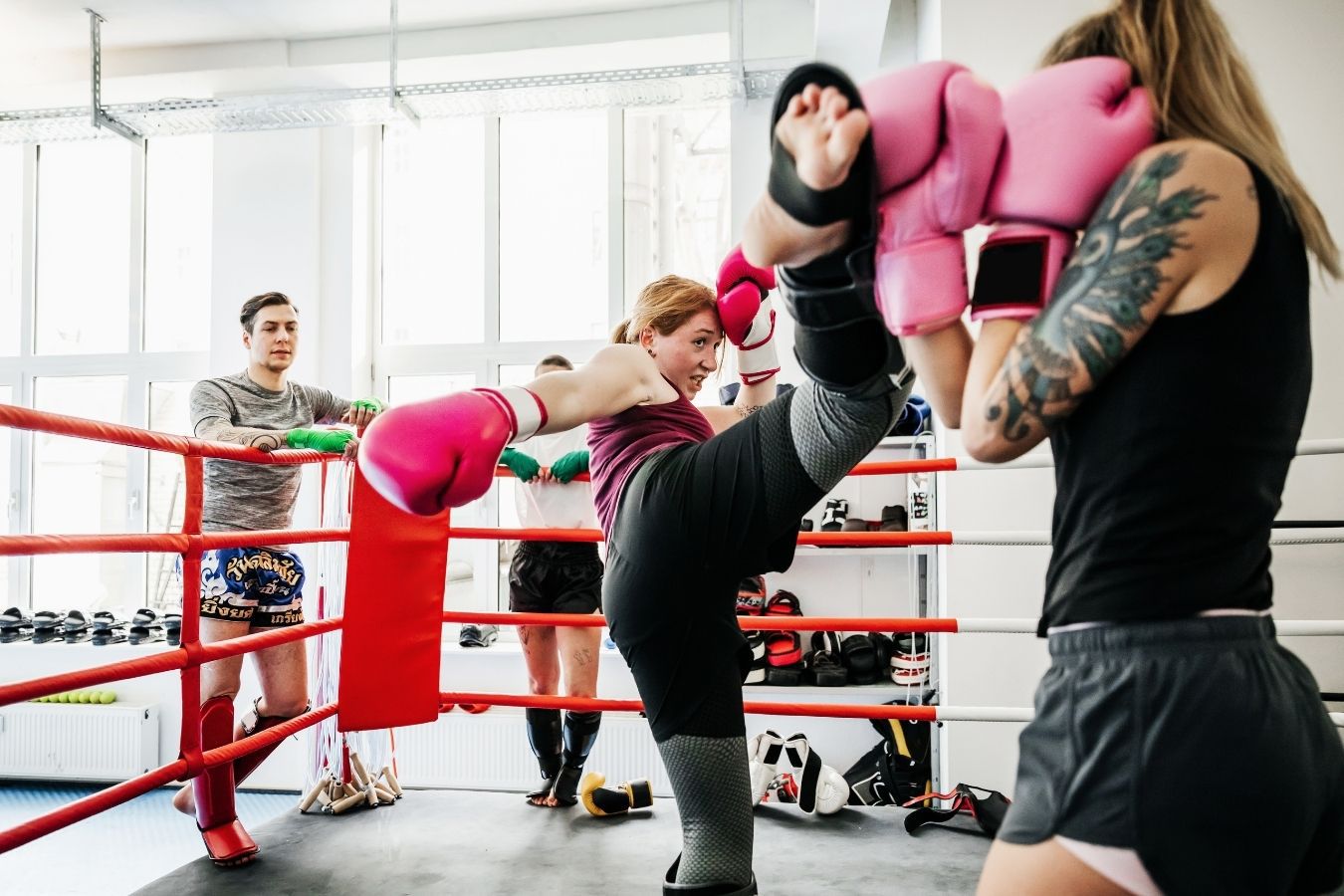
Only one study has investigated the differences between winners and losers in Muay Thai [2]. They found that regardless of winning or losing, both fighters displayed the same physiological events of heart rates above anaerobic threshold and high blood lactate concentrations.
They also threw a similar number of attacking actions. However, winners were slightly more effective with their attacks compared to losers. Meaning that winners were not more physically “fit” than the losers, but had a much higher technical proficiency than losers.
This means that performing as much of your extra conditioning training within the sport of Muay Thai is preferable in order to spend more training time perfecting technique.
Conditioning For Muay Thai
With large contributions from the anaerobic lactic and aerobic energy systems, targeting both is of vital importance. Just sparring and roadwork won’t do the trick, unfortunately. Taking a more targeted approach can level up your Muay Thai conditioning.
Aerobic Capacity For Muay Thai

Cardiac Output
Cardiac output, aka long-duration, steady-state cardio, is often seen in a bad light. For example, an older study suggests that running is detrimental to Muay Thai performance because of its adaptations to the aerobic energy system [4].
I would strongly disagree with the idea that aerobic adaptations are detrimental. While aerobic adaptations oppose anaerobic adaptations, we know that high-intensity activity is underpinned by aerobic development.
Further, if targeting the aerobic energy system is out of the question, then extra conditioning will be solely targeted towards anaerobic energy system development. Training at constantly high blood lactate concentrations is not only hugely fatiguing, but the improvements start to slow down very quickly.
Lastly, as a Muay Thai fight progresses, the contribution from the aerobic processes increases.
With these points in mind, I would not avoid performing extra conditioning emphasizing the aerobic energy system. But I wouldn’t use traditional cardio methods such as running. I prefer to use Muay Thai training due to the fact winners and losers are separated by technical proficiency.
Cardiac output should be performed with heart rates between 130-150 BPM using a heart rate monitor. Ideally, a chest strap monitor. I recommend the Polar H10 (link to Amazon) as it’s accurate and the best price. I still have the older model of this and works great.
This is a great example of how you can use the clinch as a ‘flow’ in order to drill the highly technical elements of the clinch while targeting the aerobic energy system. Not to mention the added benefit of conditioning the body to various blows.
Due to the low-intensity nature, it can be performed often and for long durations. It can even be placed within an aerobic capacity circuit along with skipping and shadowboxing.
This is an amazing example of how to use ‘flow’ as a way to develop aerobic conditioning and reap the benefits of sparring. Develop timing, technical proficiency, and agility while improving aerobic capacity.
This kind of sparring can be done every day if you want to. Same thing as the clinch fighting above, you can put this into an aerobic training circuit with skipping, shadowboxing, or even alternating with flow clinching!
Your circuit could look like this:
Exercise | Time |
|---|---|
Flow Sparring | 10 minutes |
Flow Clinch | 5 minutes |
Skipping | 5 minutes |
Flow Sparring | 10 minutes |
Flow Clinch | 5 minutes |
Skipping | 5 minutes |
That’s 40 minutes of high quality of work with 30 minutes specifically using Muay Thai techniques. No need to run the roads!
If you don’t have a partner, you can perform similar circuits using shadowboxing, bag work, medicine ball throws, and skipping.
Cardiac Power
Because Muay Thai is fought at such consistently high heart rates, we need to improve the heart’s ability to resist fatigue when working so hard. These would be best performed on the heavy bag with high-intensity combinations keeping the heart rate as high as possible throughout each rep.
Here is a simple 4 week progression:
Week | Exercise | Set/Rep | Rest |
|---|---|---|---|
Week 1 | Muay Thai Drills | 4 x 90 sec | 2-5 min or HR between 120-130 BPM |
Week 2 | OR | 6 x 90 sec | 2-5 min or HR between 120-130 BPM |
Week 3 | Off-Feet Cardio | 8 x 90 sec | 2-5 min or HR between 120-130 BPM |
Week 4 | Cell | 10 x 90 sec | 2-5 min or HR between 120-130 BPM |
Threshold Training
As heart rates remain above the anaerobic threshold throughout a Muay Thai fight, the further we can move the anaerobic threshold to higher heart rates, the less involved the anaerobic lactic energy system will need to be increasing the time to fatigue.
As mentioned earlier in the article, one study had Thai boxers with heart rates of 137 BPM at the anaerobic threshold while another group reached 168 BPM. The first group would dip into their anaerobic energy stores much earlier than the second group potentially gassing out earlier.
Performing threshold training can shift the point in which the anaerobic threshold occurs to higher heart rates delaying the time until the aerobic processes shift to predominately anaerobic processes.
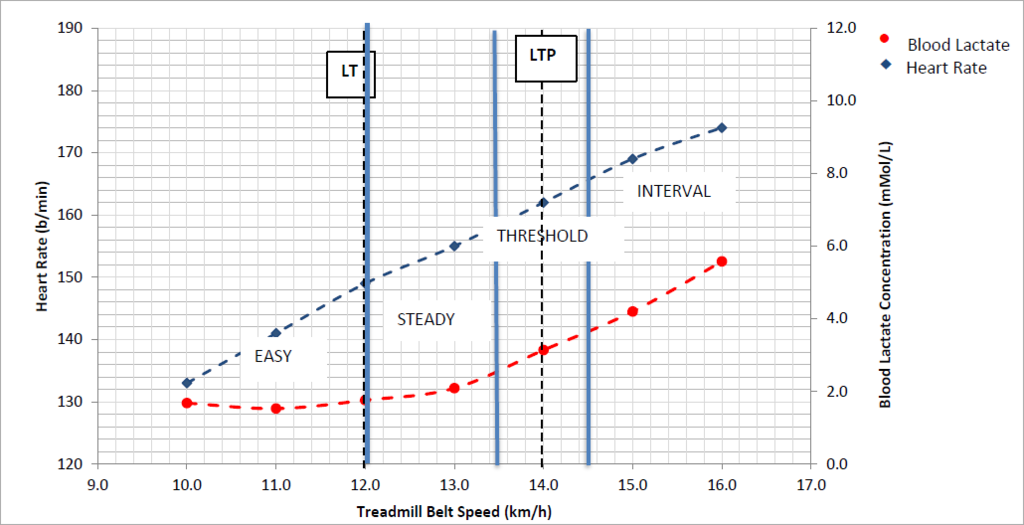
Generally, the anaerobic threshold sits between 160-170 BPM so keeping your heart rate between those ranges is important if you are not able to test it.
Here is an example 4 week progression you can use:
Week | Exercise | Set/Rep | Rest |
|---|---|---|---|
Week 1 | Muay Thai Drills | 3 x 3 minutes | 2-3 min or HR between 120-130 BPM |
Week 2 | OR | 4 x 3 minutes | 2-3 min or HR between 120-130 BPM |
Week 3 | Off-Feet Cardio | 5 x 3 minutes | 2-3 min or HR between 120-130 BPM |
Week 4 | Cell | 3 x 5 minutes | 2-3 min or HR between 120-130 BPM |
Anaerobic Power & Capacity For Muay Thai
Lactic Capacity Intervals
Buffering (removing) the by-products due to anaerobic metabolism is an important feature to delay the onset of fatigue. Ideally, perform these intervals on a heavy bag. If your training volume is very high, then you can use off-feet cardio equipment.
Each interval should not be maximal, but near maximal. You should be able to maintain the intensity for each interval without losing intensity.
Here is an example 4 week progression:
Week | Exercise | Set/Rep | Rest |
|---|---|---|---|
Week 1 | Muay Thai Drills | 2x (2 x 90 sec/120 sec) | 6-8 min active recovery |
Week 2 | OR | 2x (3 x 90 sec/120 sec) | 6-8 min active recovery |
Week 3 | Off-Feet Cardio | 3x (2 x 90 sec/120 sec) | 6-8 min active recovery |
Week 4 | Cell | 3x (3 x 90 sec/120 sec) | 6-8 min active recovery |
Lactic Power Intervals
This is where you can throw your power combinations. Lactic power should be performed, like all other modalities, using Muay Thai techniques. Adaptations happen in the working muscles of the movements. So if you perform lactic power intervals on a stationary bike, adaptations will occur in the legs and not the upper body.
Increasing lactic power will increase the rate at which you can generate energy for your muscles to use. Each interval must be maximal.
Here is a 4 week progression:
Week | Exercise | Set/Rep | Rest |
|---|---|---|---|
Week 1 | Muay Thai Drills | 2x (3 x 20 sec/120 sec) | 8-15 min active recovery (shadowboxing) |
Week 2 | OR | 3x (3 x 20 sec/120 sec) | 8-15 min active recovery (shadowboxing) |
Week 3 | Off-Feet Cardio | 3x (2 x 20 sec/90 sec) | 8-15 min active recovery (shadowboxing) |
Week 4 | Cell | 3x (3 x 20 sec/90 sec) | 8-15 min active recovery (shadowboxing) |
Alactic Power & Capacity
No study to date has investigated alactic contributions to Muay Thai. Based on other striking research in boxing, we can assume that alactic contributions would be great due to the speed and power of various kicking combinations.
Alactic Power
Alactic power will primarily be developed through Muay Thai training itself throwing power combinations with plenty of rest. It will also be supplemented by getting stronger and faster in the gym.
Alactic Capacity
When further away from a fight, you may use alactic capacity protocols using various ballistic exercise variations such as jumps squats, or explosive push-ups.
Here is a 4 week progression:
Week | Exercise | Set/Rep | Rest |
|---|---|---|---|
Week 1 | Muay Thai Drills | 10 x 10 sec/20 sec | Cell |
Week 2 | OR Explosive Push-up | 2x (8 x 10 sec/20 sec) | 8-10 min active recovery (light shadowboxing) |
Week 3 | OR Split Squat Jump | 2x (10 x 10 sec/20 sec) | 8-10 min active recovery (light shadowboxing) |
Week 4 | Cell | 3x (8 x 10 sec/20 sec) | 8-10 min active recovery (light shadowboxing) |
Specific Muay Thai Intervals
Unfortunately, no study has given ranges regarding the duration of high-intensity efforts and pauses so providing general guidelines for worst-case scenario training is impossible. However, you could determine this yourself by watching footage of yourself or your competition fighting.
Instead, specific Muay Thai work intervals can be used on the bag or pads of 9 seconds high intensity striking with 12 seconds of observation or study.
Perform approximately 9 intervals to replicate a 3 minute round.
Summary
There is more to Muay Thai conditioning than hitting the pavement. While this is what is commonly done in Thailand, their system is much different with young athletes fighting their way out of poverty with the sport being the "survival of the fittest."
Instead, vary your conditioning and use skills training to accrue more time practicing Muay Thai skills.
References
1. Crisafulli, A., Vitelli, S., Cappai, I., Milia, R., Tocco, F., Melis, F., & Concu, A. (2009). Physiological responses and energy cost during a simulation of a Muay Thai boxing match. Applied Physiology, Nutrition, and Metabolism, 34(2), 143-150.
2. Cappai, I., Pierantozzi, E., Tam, E., Tocco, F., Angius, L., Milia, R., … & Crisafulli, A. (2012). Physiological responses and match analysis of Muay Thai fighting. International Journal of Performance Analysis in Sport, 12(3), 507-516.
3. Silva, J. J. R., Del Vecchio, F. B., Picanço, L. M., Takito, M. Y., & Franchini, E. (2011). Time-motion analysis in Muay-Thai and kick-boxing amateur matches. Journal of Human Sport and Exercise, 6(3), 490-496.
4. Turner, A. N. (2009). Strength and conditioning for Muay Thai athletes. Strength & Conditioning Journal, 31(6), 78-92.


